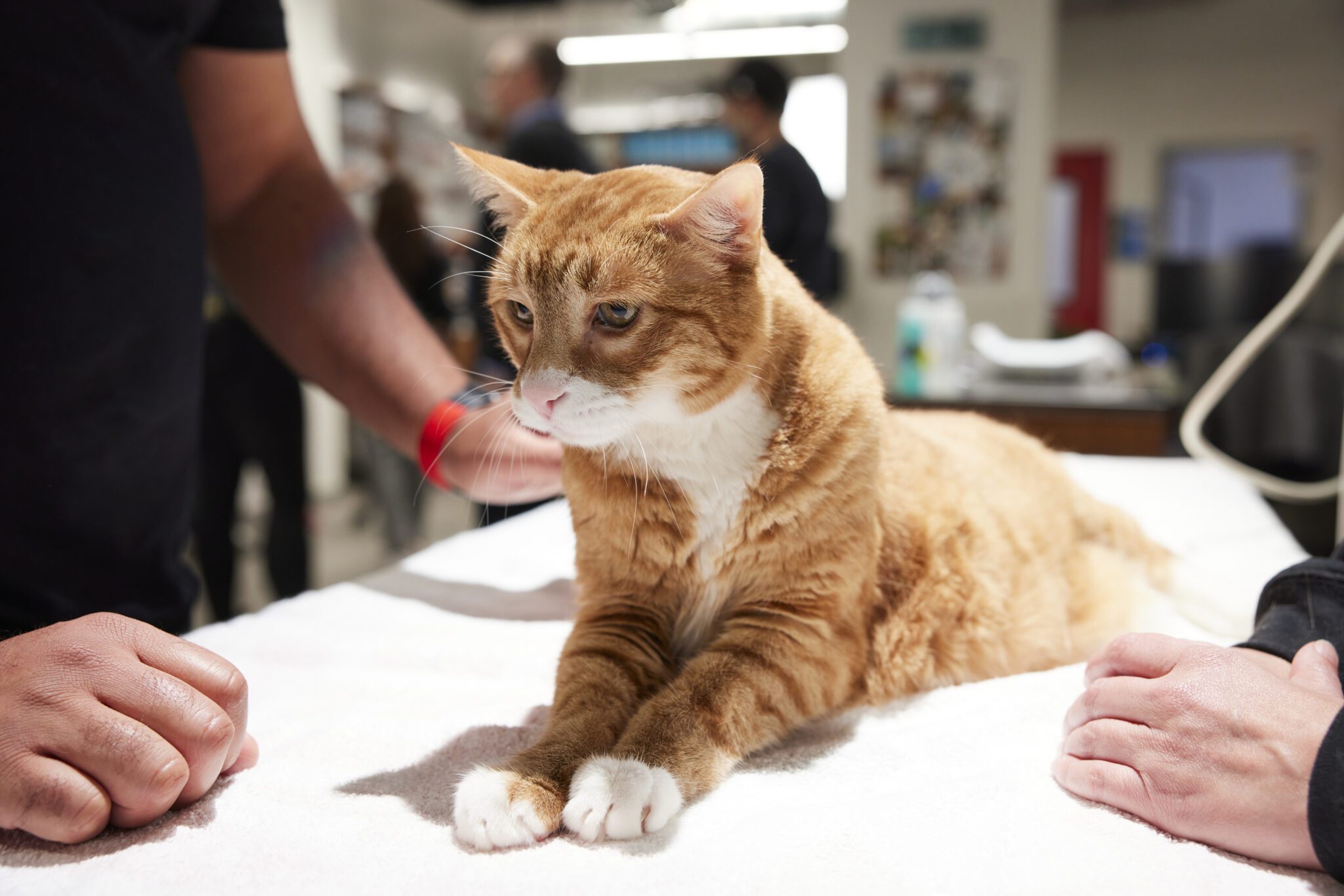
How to Tell if Your Cat Has a Broken Tail
Dr. Katie Freeman
Call & Speak with a doctor Open 24/7, Even Holidays!
Walk in today for:
Emergencies
Point-of-Care Ultrasound
Urgent Care
X-Rays
Diagnostics + Testing
End-of-Life Care
Surgery
Treatment + Hospitalization
Cats are agile creatures, adept at landing on their feet and slipping out of tight spots. They commonly use their tail to help keep them centered and balanced when moving around. However, as nimble as they are, they’re not immune to injuries. One of the more common injuries our feline friends might sustain is a broken tail. Recognizing the signs early on can make a significant difference in your cat’s recovery and comfort.
At Veterinary Emergency Group, our aim is to educate cat owners on recognizing these signs and to stress the importance of seeking immediate veterinary care.
Common Causes of Tail Injuries in Cats
While cats are skilled animals, accidents can still happen. Here are some typical scenarios that could result in a tail injury:
- Caught in a door or window: This is a common cause, especially for indoor cats.
- Accidentally stepped on: In crowded spaces, a cat’s tail can get underfoot.
- Fights with other animals: Aggressive encounters can lead to various injuries, including tail injuries.
- Falling from a height: Although cats often land on their feet, their tails might not always be so lucky.
Signs Your Cat Might Have a Broken Tail
If you suspect your cat may have injured its tail, look out for the following signs:
Limp or Immobile Tail
The most obvious sign is if the tail appears limp or doesn’t move as it usually does.
Swelling or Visible Deformity
This indicates a possible fracture or dislocation.
Pain When Touched
If your cat reacts with pain or aggression when its tail is touched, it might be injured.
Difficulty Urinating or Defecating
The tail plays a role in your cat’s ability to eliminate. If they’re struggling, the tail could be the issue.
Behavioral Changes
A cat in pain might hide, avoid social interactions, or be less active than usual. Remember, every cat is different, and some might not show overt signs of pain or discomfort. It’s always best to trust your instincts and seek a professional opinion if you’re concerned.
Importance of Seeking Veterinary Care
When it comes to potential injuries, especially something as significant as a broken tail, home remedies or waiting it out aren’t options. Here’s why seeking veterinary care is essential:
Accurate Diagnosis
A vet can confirm whether the tail is indeed broken or if the injury is of a different nature. A lot of time an x-ray (radiograph) will be warranted to fully assess the damage.
Pain Management
Cats are experts at hiding their pain, but that doesn’t mean they aren’t suffering. A vet can provide appropriate pain relief.
Contact VEG if You Think Your Cat Has a Broken Tail
As a cat owner, you want the best for your beloved feline companion. Keeping an eye out for any unusual behavior or signs of injury is part of responsible pet ownership. Remember, when in doubt, always consult with professionals. Injuries like a broken tail are time-sensitive, and prompt action can make all the difference in your cat’s wellbeing.
Your vet will provide advice on how to care for your injured cat at home, ensuring a swift recovery. If you observe any signs of a tail injury, we urge you to contact Veterinary Emergency Group immediately. Our dedicated team is well-equipped to diagnose and treat such injuries, ensuring your furry friend is on the path to recovery in no time.

